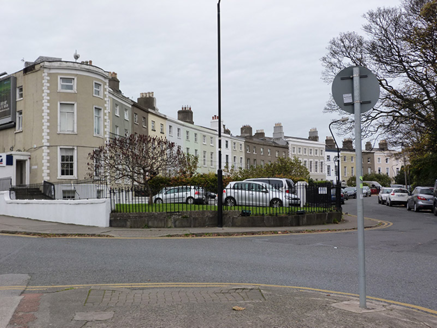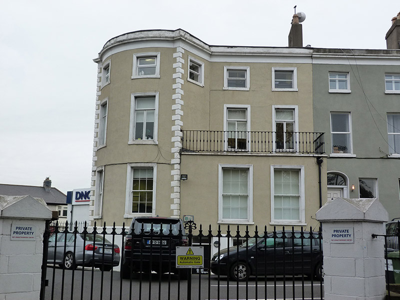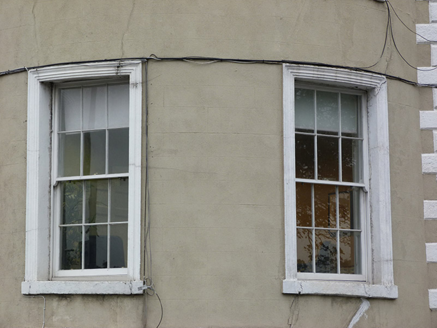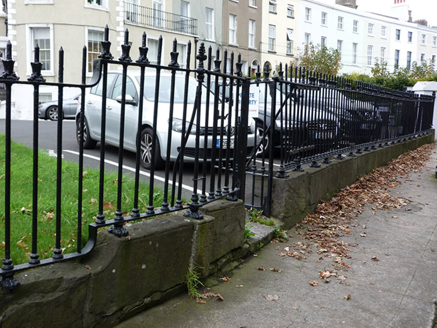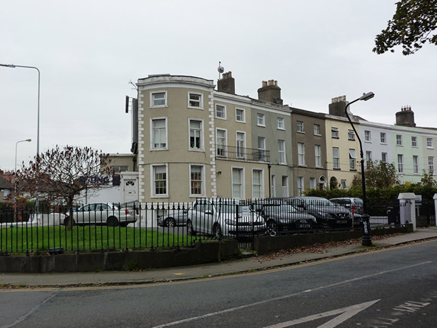Survey Data
Reg No
50120097
Rating
Regional
Categories of Special Interest
Architectural, Artistic
Original Use
House
In Use As
Office
Date
1790 - 1795
Coordinates
317943, 236419
Date Recorded
26/10/2017
Date Updated
--/--/--
Description
Corner-sited end-of-terrace irregular-plan two-pile three-storey former house over raised basement, built 1792 as one of twenty-five, southwest part of front projecting and with shallow bow, bowed bay to opposite part of rear elevation; rest of front elevation is two-bay with single-storey over basement extension to front, and two-storey return to north end of west elevation. Now in use as offices. Entrance in porch addition to west end of building, but possibly formerly to east of front bow. Flat roof, having rendered chimneystacks with clay pots to east end, hidden behind moulded render parapet with moulded render cornice, and eaves course. Ruled-and-lined rendered walls over render plinth course with cut masonry coping, and quoins to front projection. Square-headed window openings with moulded architraves and masonry sills, having six-over-six pane timber sliding sash windows to ground floor of front and replacement uPVC elsewhere. Square-headed doorway to porch with rendered surround and keystone, replacement timber door, and approached by flight of three concrete steps and platform. carparking to former front garden, bounded to west by replacement metal railings on rendered masonry plinth, decorative cast-iron pedestrian gate at southwest, decorative cast-iron railings on carved rendered plinth wall to south, with replacement metal vehicular gate set to concrete piers to south.
Appraisal
This former house terminates a formal architectural set-piece, Marino Crescent, one of the few Georgian crescents in Dublin City. It attractively addresses this busy junction with bows to the front and rear elevations. The retention of some early timber sash windows adds to the heritage value of this building, while moulded render detailing is employed to good effect to subtly enliven it. The crescent comprises houses with similar parapet heights and fenestration patterns, with larger houses to the centre and west ends. A higher level of ornamentation is evident in this house than elsewhere, with stucco detailing to the window openings. The house was built in the last decade of the eighteenth century to take advantage of the sea views, prior to land reclamation projects associated with the enlargement of Dublin Port. The houses were built by Charles ffolliot, reputedly to spite Lord Charlemont, blocking the vista from Marino House, and were locally known as Spite Crescent as a result.
